I didn’t expect to endanger a cheetah on my first trip to Kenya’s Masai Mara.
But as the driver of our van revved the engine, the cheetah leapt to its feet and retreated into the bush, startled by the clamoring vehicle, kicked up dust, and exclaiming tourists frantically trying to photograph it. The worry, the cheetah, forced me to wonder: what was I doing here?
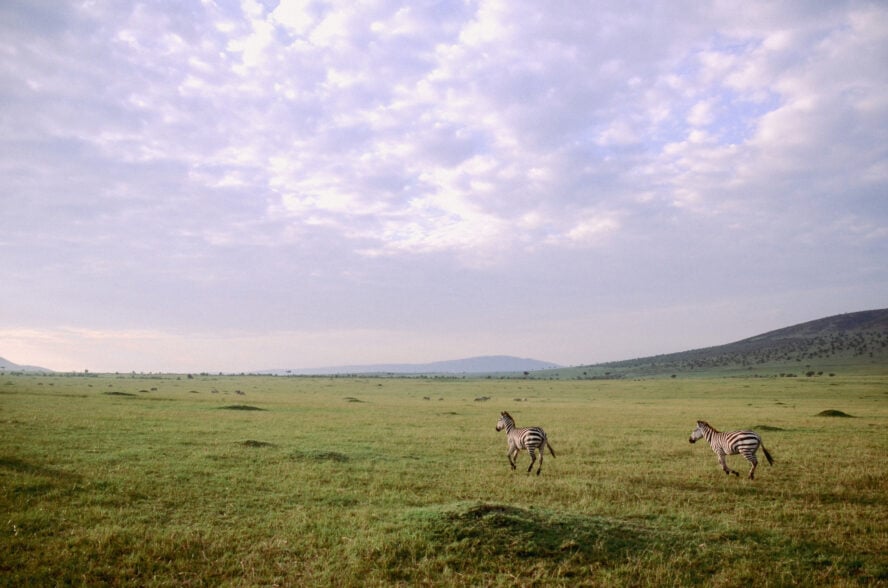
Going for broke
It was my fourth year traveling in East Africa, but this was the first time my perception of safaris began to unravel. While some people only dream of trekking Kilimanjaro in Africa, other people want to witness its magnificent wildlife.
I had booked the safari through an unregulated website akin to a Craigslist for budget tour packages. Companies advertise their offerings for excursions into the bush, and for cash-strapped travelers wanting to visit the Masai Mara it seemed like a great deal. A lot of folk, just like myself, are coming across these sites in their search too—an estimated 6 million people visit Africa each year specifically for wildlife tourism.
“No one likes a photo of a lion sleeping or a cheetah sitting.”
Previously, I’d only gone on safaris that were organized for me; whether for work, or school, or through an overhead tour operator. Because I was a broke college student, I went for the most affordable option promising close encounters with Kenya’s magnificent and elusive “big-five”: the lion, leopard, elephant, rhinoceros, and Cape buffalo.
It was only after being ushered into the crowded van, sitting shoulder-to-shoulder with eight other backpackers from throughout the U.S. and Europe, that I started to accept that you do truly get what you pay for.
A spoiled splendor
There were red flags from the start. The guide—who showed up wearing jeans and a graphic t-shirt, as if he just stepped out of a Nairobi bar—couldn’t answer many of the questions we had about the animals. Instead, he rattled off their gestation periods, as if that was the only information of interest to us.
It did not take long to see why the guide felt comfortable promising us up-close rendezvous (a promise many other companies I’d been on safari with are hesitant, if not completely reluctant, to make).
With the help of radios which connected our driver with his colleagues in the park, he was able to identify the locations of certain animals, and then he would drive—or, more appropriately, race—across the savanna to reach them. He often would forgo the roads, and when we’d find the animal in question, he would antagonize it by circling and honking.
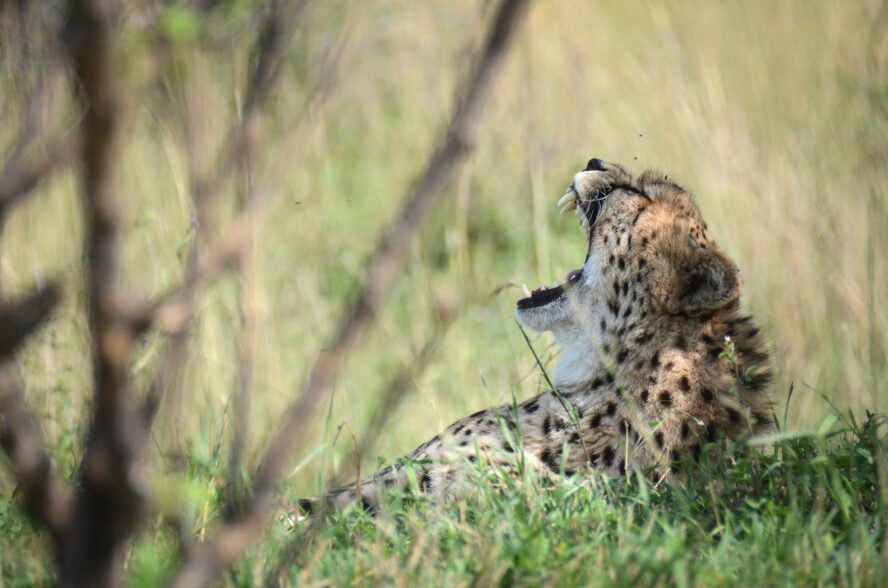
This was all in an attempt to spook the animal. When I asked him why he was doing this, the answer, to him, was obvious: no one likes a photo of a lion sleeping or a cheetah sitting. But a bucking herd of zebra, or a sprinting cheetah, or two irritated lions jumping up and tossing their heads? That makes a good photo.
And that, apparently, brings in the best tips.
An Observer’s Effect
According to the Centre for Agriculture and Bioscience International, it is an observable fact that certain species of animals in highly trafficked safari destinations are changing their hunting behaviors, sleep patterns, and showing documented signs of distress due to the influence of tour companies interacting with and overwhelming wildlife (similar to the experience I had in Kenya).
Even though it might be impossible to notice a change in an animal’s overall habits or natural patterns on a single safari, it was impossible not to notice the distress of the animals we antagonized that day.
It wasn’t long after my time in Kenya that I began working as a travel guide throughout Sub-Saharan Africa, as well as a freelance wildlife photojournalist. After moving to Mozambique, which I now use at my base for work across the continent, I was confronted with the reality that not all safari experiences are harmless or have the best interests of wildlife at heart.
Over the course of those early guiding years I began to not only question safari practices across the region, but I began to look into other wildlife-centric tourist attractions to see just how insidious and prevalent these kinds of experiences have become.
Lion Walking: A Trophy for Your Instagram Becomes a Trophy Above Someone’s Mantle
If you spend some time surfing the Internet looking for unique wildlife encounters in countries such as Zimbabwe, Zambia and South Africa, it won’t be long before you stumble upon an ad for a lion walking experience.
The activity is as straightforward and enticing as it sounds: you visit a facility where you can cuddle with cubs and walk side-by-side with lions (and anywhere between four to eight rangers carrying assault rifles).
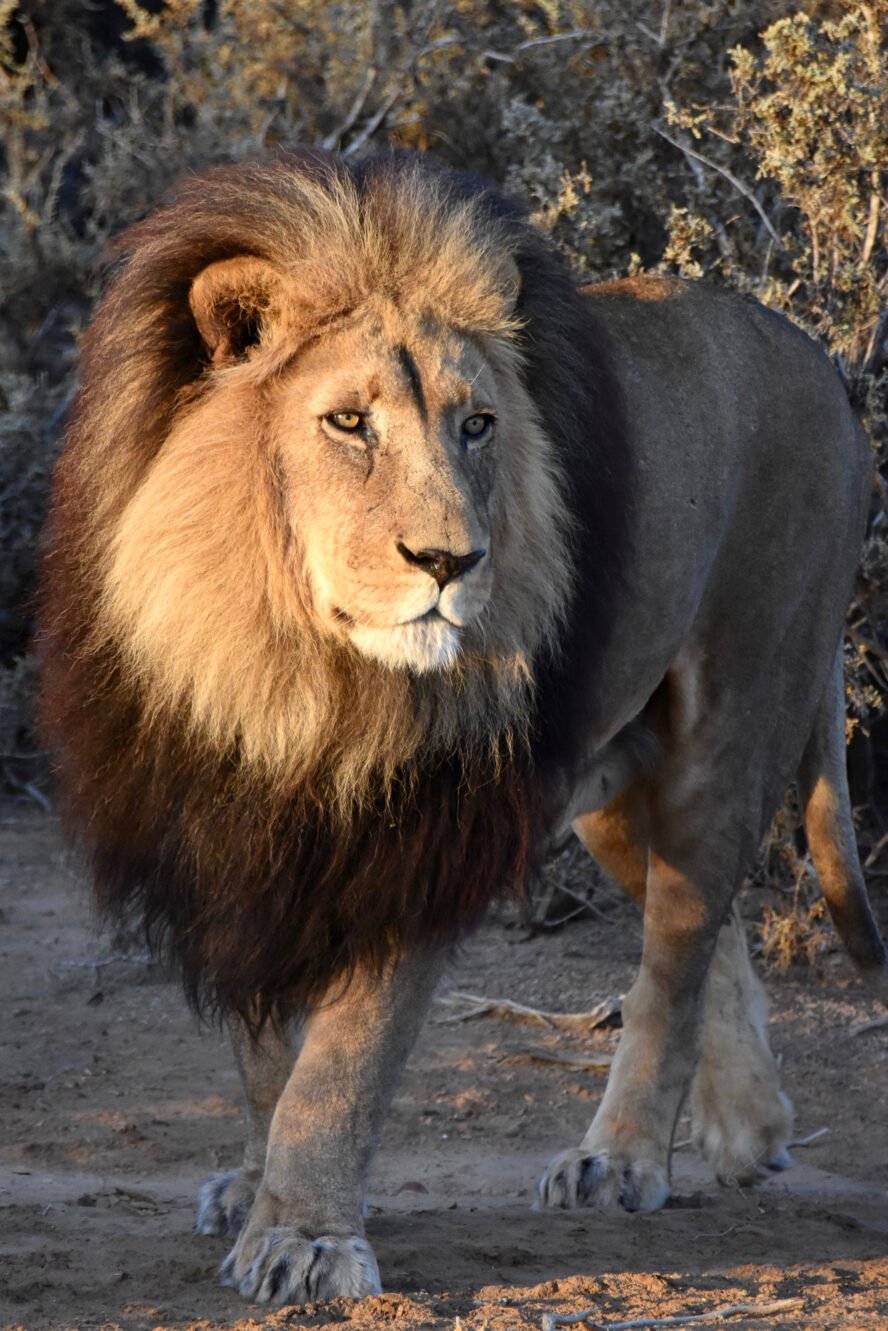
Depending on the specific facility, they may claim to be a sanctuary (where injured lions go to be rehabilitated), or a breeding center (to help boost the general population), or a conservation and education center (which teaches tourists about lions as they get close and personal with the animals themselves).
Many of the companies promoting these experiences only briefly touch on how many of these so-called sanctuaries are actually breeding facilities (similar to zoos), and the cubs are sold to canned-lion hunting facilities once they reach maturity.
Travel companies peddling lion walking experiences often make the argument that the money tourists pay to visit these facilities goes towards conservation efforts, or at the very least, educates visitors on wildlife conservation. But even the South Africa government admits that there are little-to-no conservation benefits when it comes to keeping lions in captivity.
In South Africa’s Draft Policy Position on the Conservation and Ecologically Sustainable Use of Elephant, Lion, Leopard and Rhinoceros, published in June 2021, it states, “The captive lion industry does not contribute meaningfully… to the conservation of wild lions, and trade in derivatives poses major risks to wild lion populations, and to stimulating illegal trade.”
One could argue that although these encounters may not provide tons of conservation benefits, if the lions were treated well and lived decent, full lives, then there’s some benefit.
But the results of inspections done by the National Council of Societies for the Prevention of Cruelty to Animals (NSPCA) showed that lions used in the captive lion industry (which largely consists of lion walking facilities) are often malnourished, lack sufficient natural environmental enrichment, suffer from various health problems (such as deformities and open sores or wounds from stress), and are forced into distressing situations from a young age in order to train them to walk with humans.
A captive audience
The lives of these cubs don’t end with being released into the wild, or into a space where they can live out their full lifespans. Once the cubs reach adulthood and are considered too unpredictable and dangerous for tourist encounters, they are often sold to the canned lion hunting industry.
At these hunting facilities, the lions are placed in an enclosure and killed by trophy hunters for anywhere between $10,000 and $100,000,according to the International Fund for Animal Welfare.
In May 2021 the South African government announced that it would begin to phase out the breeding of captive lions, although plenty of facilities are still operating under the guise of being an “animal sanctuary.”
“While there are many genuine wildlife sanctuaries that do excellent work, a genuine sanctuary wouldn’t typically breed animals, nor would it allow tourists or visitors to have close contact with its animals,” says Mark Jones, the Head of Policy at the Born Free Foundation. Many of the facilities that market themselves as “sanctuaries” or “conservation programs” use these ploys to lure in unsuspecting tourists and paying volunteers, he says.
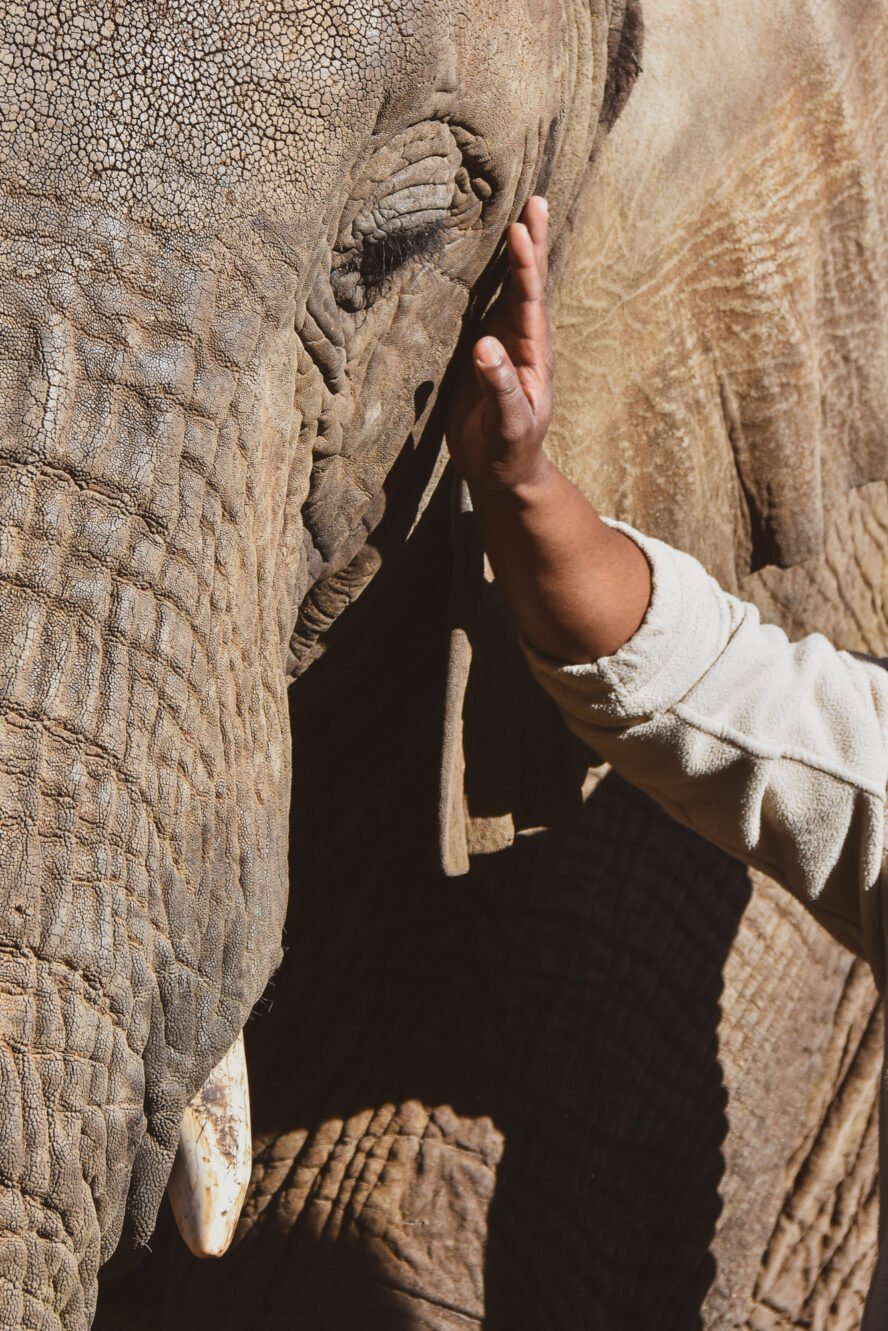
Elephant Riding: A Backbreaking Exercise
I can understand the irresistible appeal of being able to ride an animal as magnificent as an elephant. When else would you be able to stand trunk-in-hand with such a magnificent and iconic animal or sit on one’s back and see the African savanna from between their enormous, flapping ears?
However, it is well-documented that elephants are not domesticated animals. Even those who have been raised by humans can act with spontaneous aggression, and aren’t accustomed to living in confined spaces.
To train elephants to carry humans on their backs requires a cruel breaking process, called “the crush,” and often endure cruelty throughout their shortened lifespans, according to the report, Welfare of Elephants in Captivity in South Africa, by the NSPCA.
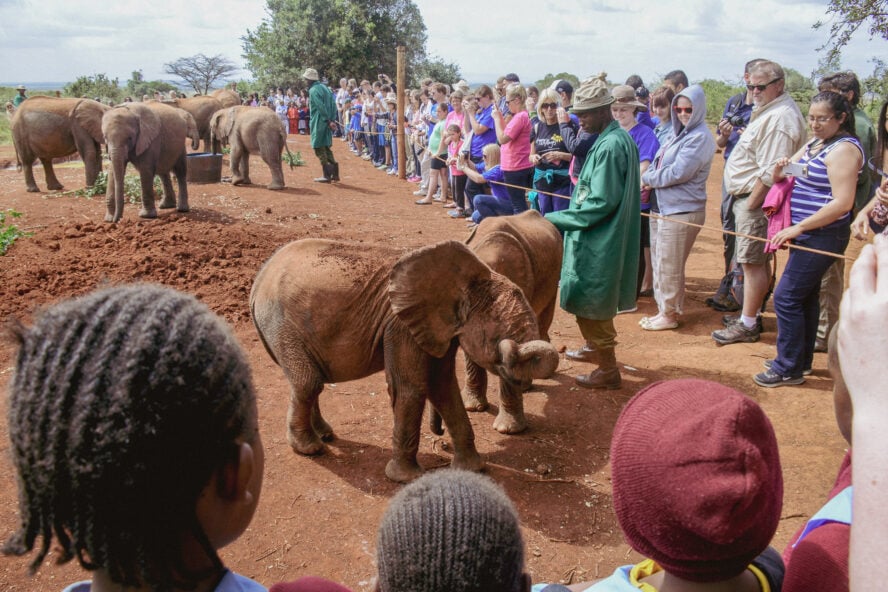
Crushing effects
Training elephants for human interactions and riding often begins at an early age when they are separated from their mothers. Elephants are trained using negative reinforcement (meaning pain and discomfort) in order to instill in them that humans are the dominant entity in the “herd.”
Bull hooks, deprivation of water and sleep, physical restrictions, electric prods, and psychological breaking (such as putting elephants into isolation or in areas without proper mental stimulation) are all well-documented methods used in these elephant facilities.
Many of these facilities still manage to draw tourists by claiming that they offer a chance to learn about the animals and their conservation.
Although some of these places are telling the truth when they claim that they are rescuing orphaned elephants—from, for example, a poaching incident in the wild—the benefits end when the elephants are then trained to perform and interact closely with humans—and are denied their autonomy.
Sanctuaries such as the famed David Sheldrick Wildlife Trust in Nairobi, Kenya, are a rare example of an organization that genuinely has the best interest of their rescued elephants at heart. Here, tourists are not allowed to ride or walk with the elephants, and once elephants are of a certain age and have the potential to be released into the wild, they are separated entirely from tourist interactions in order to increase their chances of success in the wild. Unfortunately, these are far and few between.
All Safaris Are Not Equal: The Issue of The Unregulated
Although I personally never felt comfortable visiting some of these hands-on wildlife encounters and believed that going on a safari was the best way to see African wildlife, for many years I believed that all safaris—from budget to luxury—were essentially harmless.
It seemed that the best way to learn about the environment, wildlife, and whichever spectacular ecosystem I found myself in was to go on a guided safari; and I still strongly believe that that’s true. But after my experience in Kenya and in the years following, I learned that not all safaris are created equal, and the chances of signing up for a safari with an unlicensed and unregulated company is shockingly easy to do.
On the billboards in lobbies of hostels throughout Nairobi or Arusha—or even online when you search “budget safari”—there are endless ads promoting safari companies that promise wildlife viewings for reasonable rates.
The issue is that there has been a steady rise in unlicensed safari companies marketing themselves towards people looking for quick and affordable trips into the bush. Only a few months after my experience in Kenya did I realize that the “company” I went with was nothing more than a group of unlicensed “guides” with a van, looking to bring naive tourists out to the savanna for a fast cash-in-hand transaction.
Damage from an unregulated safari doesn’t stop there. According to Kenya’s Tourism Regulatory Authority, unlicensed safari companies can cause significant harm towards wildlife, conservation, and a country’s tourism sector.
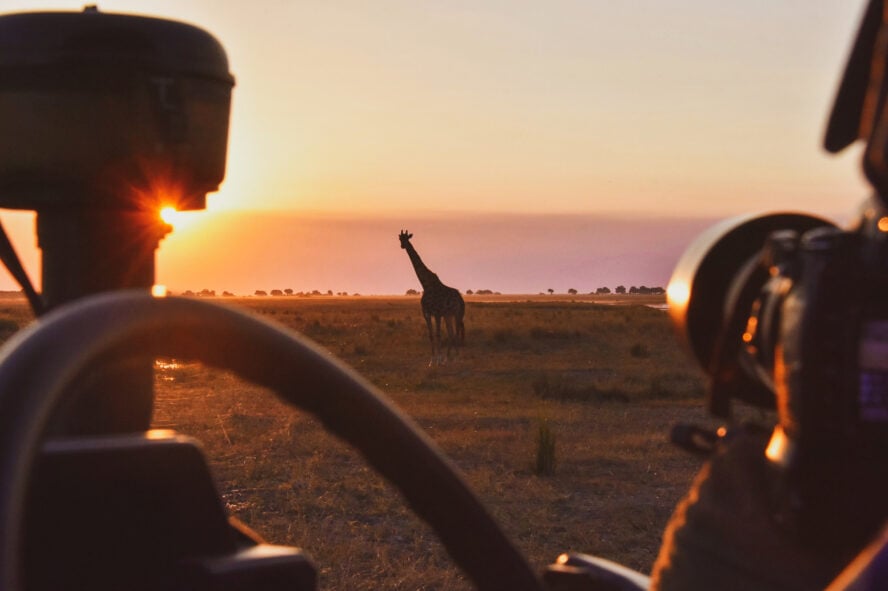
The purpose of a safari company getting the necessary licenses—whether in Kenya, Tanzania, or beyond—is to enforce that companies abide by certain standards and codes. This can mean anything from ensuring that a certain amount of revenue earned goes towards local conservation efforts or requiring that guides are trained and knowledgeable about wildlife.
Licensed guides tend to better “read the savanna” and know where to find animals based on time of day, animal tracks, weather, and behavioral patterns. Even though I saw that cheetah in the Masai Mara so close I could hear it breathing, its stress and obvious discomfort with our presence detracted from the overall experience.
Budget safaris have their place—and their price
There’s nothing inherently harmful about budget safaris; I strongly believe that they play a key role in supporting up-and-coming guides and companies, and they allow shoestring travelers an authentic wildlife experience when they otherwise may not be able to afford to.
But it’s important for a traveler to take responsibility when booking a safari. Ask to see a company’s certification and/or license before making a booking, and make sure that it isn’t fake by checking for its registration in the country’s tourism database. This is critical in ensuring that a traveler is booking a safari with a company that genuinely cares about supporting conservation, the local economy, and won’t harass or potentially harm animals.
How to Identify an Ethical Safari Company
1. Ideally, a safari company interferes with wildlife as little as possible. This means choosing companies and guides that make it known that they do not follow practices such as chasing animals for the “benefit” of the guest, and not purposefully scaring or intimidating animals for a better picture or scene.
2. A safari company shouldn’t promote “experiences” such as lion walking or elephant riding. Lion walking tends to be rife in Zambia, while elephant riding can be found in South Africa.
3. A reputable company should be licensed and meet the specific country’s certifications. There are different licenses and standards for each country, but it’s important to choose a company that follows correct guidelines and protocols.
4. Find out what percentage of what you’re paying goes towards conservation or local communities.
Where to Find Licensed Companies:
- Tanzania: Tanzania Tourist Board
- Uganda: Uganda Tour Operators
- Kenya: Kenya Association of Tour Operators
- South Africa: Association of Southern African Travel Agents
New Perspectives
Sitting on a rocky outcropping in northern Tanzania, surrounded by crooked acacia trees and diving swallows, I heard an elephant trumpet for the first time and knew I wanted to be a guide. Looking down at them from the craggy ridge of a mountain, their slowly moving bodies were like black pinpricks speckled on the golden canvas of the savanna. It was akin to a glimpse into a world without humans.
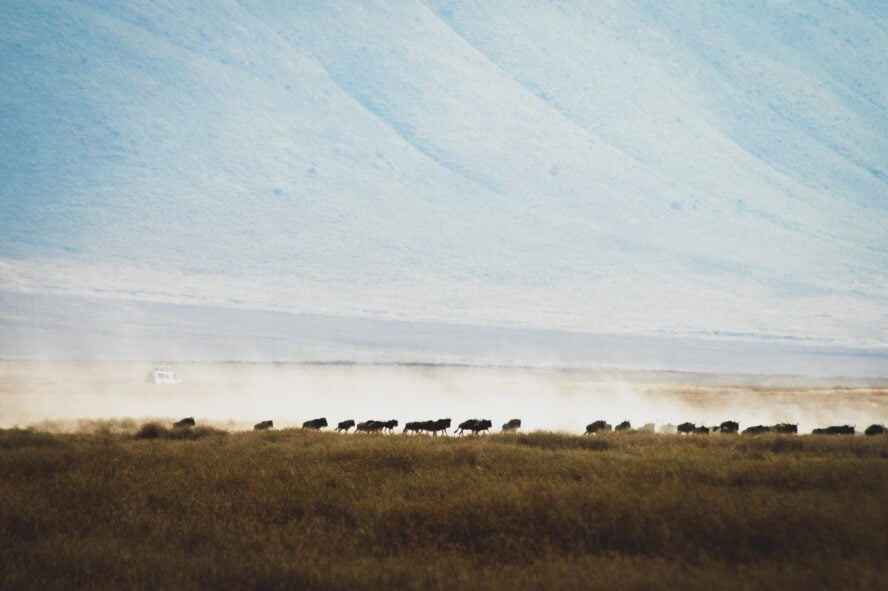
When I became a guide, I was constantly learning to balance. I aimed to bring my guests as many moments as possible that were similar to the one I experienced on the mountain that day: to watch African wildlife without subjecting them to our encroachment, to provide experiences that didn’t make the animals feel our presence.
Participating in regulated safaris, supporting licensed companies, and staying away from tours that promote unnatural wildlife interactions is the best we can do to keep wildlife wild.


